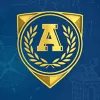Take a look inside 5 images
Adventure Academy
Pros: Quality learning content covers a lot of ground and engages kids in a variety of ways.
Cons: Teachers have no control over, or knowledge of, what kids are doing in the game.
Bottom Line: With so much to distract kids, and no role for teachers, this virtual learning world may not be well suited for classroom use.
In Adventure Academy, each kid plays with their own avatar, so teachers will need to help get kids set up with their own unique credentials. As teachers do that, they will probably want to turn the chat function off, or at least choose the "quick" option, which allows kids to chat with pre-selected messages only. If teachers choose to enable full chat function, they may want to monitor and check in on what kids are chatting about. Because the environment is so vast, teachers can consider helping kids learn how to navigate and explaining what they expect kids to do in the academy. Teachers can also check each kid's progress report for a basic listing of activities kids have completed. Beyond that, once kids are set up and let loose, there's not much else teachers can do.
Adventure Academy is a subscription-based massively multiplayer online (MMO) game with a focus on academic subjects like math, language arts, science, and social studies. From the same developer as ABCMouse.com, it has a similar all-encompassing approach to delivering educational material. Kids wander around a virtual school interacting with other players, completing quests, and engaging with learning content. Kids create an avatar and then set off to explore the grounds, complete quests, interact with other kids, shop at the virtual store, create personalized buildings, and engage with learning content. Topics are presented through videos, books, games, interactive problem sets, puzzles, and more. Kids earn points for playing, which unlock locations and allow them to buy items for their avatar and build a virtual house. If teachers enable it, kids can also chat with other players in the game. There are three chat options: Disabled turns off chat entirely, Quick allows kids to use and see pre-selected messages only, and Standard allows kids to type their own messages that must pass through automatic filters.
Though Adventure Academy is playable on a computer, it's not web-based. That is, teachers must download an app on the computer in order to play. The game isn't compatible with many older devices (computer or mobile devices) and requires a lot of storage space to download properly. To sign up for the free 30-day trial on a computer, teachers must provide their credit card information. Each account includes up to three avatars.
Adventure Academy offers beautiful graphics and an impressive breadth of quality academic topics in a variety of engaging formats. But the gaming extras and consumer elements can easily overshadow that academic focus. The environment itself is very impressive, with a setting that mimics a real campus. Kids can watch funny videos, play games, read books, and more. It's clear a lot of thought went into creating the learning material. But there's no feedback, little help when kids struggle, and no indication of how far along kids are in each individual game (e.g., how many rounds they need to complete). When kids create their avatar, they can choose from three difficulty levels, but content doesn't adapt according to how kids actually perform.
Also, some kids may find it quite a challenge to navigate through the game. Particularly for those not used to gaming, moving the avatar around doesn't always feel natural or responsive, and there's a lot of literal distance to cover between learning experiences. It's not always clear how to engage with the activities, and there's so much learning material that it's easy to get lost. Plus, kids can easily spend their whole time in the game without once engaging with the learning content. Unfortunately, teachers have no way to help guide kids, check up on them, or preview material. Progress reports are limited to a simple list of activities kids have completed. Given that only three avatars are included with each account and there's no school pricing, making and paying for enough accounts to cover a class of kids can also get pricey and cumbersome. So while there are a lot of fun and impressive elements, a bit more focus on the educational content and additional teacher tools would make this a better fit for use in the classroom.














